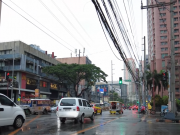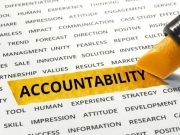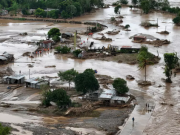Flood control projects were designed to protect us… and yet we are still paying the price while the floods keep coming?
Billions have been poured into concrete, pumps, and levees, all meant to be the ultimate guarantee against disaster. And yet, the floods still happen. The damage still mounts. It feels like a fundamental promise has been shattered, doesn’t it? It’s more than just infrastructure failure; it’s a betrayal of the basic social contract, the government’s job to keep us safe.

But here’s the thing, and maybe this is just me trying to find a silver lining in the muck: bawat failure is also a chance to improve. Think about New Orleans after Hurricane Katrina. It was unimaginable destruction, sure, but the recovery wasn’t just about putting things back together. It inspired smarter planning, stronger engineering, and a total reassessment of how a modern city deals with water. That’s the resolve we need now. We can’t just keep mopping up; we have to change the system.
Why the Walls Crumble: We’re Building for the Past
Look, we can point fingers all day, but the truth is our systems are failing because we’re building for a world that no longer exists.
We’re obsessed with the 100-year flood. That’s a measurement based on historical data. But honestly? Climate change has ripped up that old rulebook. The rainfall is more intense, and storms are more unpredictable. What was once a ‘once-in-a-century’ event now feels like a ‘once-every-few-years’ event.
And it’s not just the weather. It’s the poor maintenance: the clogged drainpipes and the silted-up channels the city forgets about until it’s too late. It’s the outdated engineering that favors a massive concrete wall over working with nature. We need to learn from the past and build better futures. This means:
- Climate-Resilient Design: Building for the projected future, not the recorded past.
- Nature-Based Solutions: Instead of just concrete, let’s use wetlands, mangrove forests, and permeable ground. These are cheaper, they absorb water like sponges, and they don’t break.
- Proactive Planning: Stop waiting for the disaster. Start making hard decisions about where we shouldn’t build in the first place.
Transparency Builds Trust
The fastest way to kill public faith? Spend a fortune and show zero receipts.
When a major flood project collapses, literally or figuratively, the first thing people ask is, “Where did the money go?” And usually, the answer is a shrug and a pile of confusing government reports. That secrecy is corrosive. It fuels suspicion that corruption or gross incompetence is at play.
Transparency builds trust. Period.
We need public, easy-to-read dashboards showing us exactly how every peso, every dollar, is being spent. We need independent, rigorous audits, not just internal checks, but people with real teeth looking at the books. Sunlight is the best disinfectant.
And let’s use technology for good, for once. Give us real-time data on water levels and system performance. If we can track a pizza delivery on our phone, we should be able to track the flood risk in our neighborhood. This empowers us, the residents, to make fast decisions, which is exactly what we need when the water is rising.
You Are the Expert: The Voice of the People
Engineers are brilliant, no question. They understand flow rates and load-bearing walls. But I’m going to tell you something controversial: the people who live there know more than the blueprints.
Boses ng tao, gabay sa pagbabago.
Think about it: who knows where the drainage always backs up? Who knows that when the creek hits that one specific point, the street is toast? It’s the old man who’s lived on that corner for forty years. It’s the homeowner whose basement floods every time a big truck drives by.
We need inclusive planning. Not a stuffy meeting downtown at 2 PM on a Tuesday, but community sessions in the actual neighborhoods being affected. We need:
- Respect for Local Knowledge: Treat the residents’ observations about historical flood patterns as critical data points, not just anecdotes.
- Clear Feedback Channels: Make it simple for me to report a clogged sewer or a compromised levee. Turn every resident into an eyes and ears monitor for the entire system.
By listening, we avoid making the same old, costly design mistakes.
Moving Forward with Stronger Resolve
It’s easy to be cynical. It’s easy to feel defeated when you look at the billions wasted and the homes still damaged.
But let’s shift that energy. The failure of the past is not a life sentence; it’s the most expensive, painful lesson we’ve ever received. We can use this collective frustration, this burning knowledge that we were promised safety and didn’t get it, to demand stronger resolve and better systems.
The broken promise doesn’t have to define our future. It can be the pivot point. It can be the moment we finally stop building the same old defenses and start engineering true resilience.
So, here’s my question for you: What’s the biggest, most obvious flood control failure in your community that you know the government keeps ignoring? Share your story below.
| The state of flood control directly affects your property value and safety. Our new series by HousingInteractive exposes the truth: corruption and ‘ghost’ projects have wasted billions, needlessly putting communities and real estate assets at risk. To protect your investment and demand real solutions, read and follow these articles. Next: When Floods Become a Business: The Real Cost of Corruption |

























